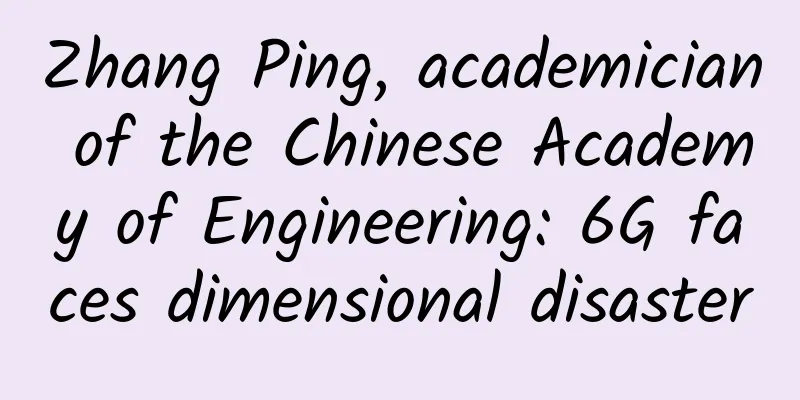Zhang Ping, academician of the Chinese Academy of Engineering: 6G faces dimensional disaster

|
5G is developing in full swing. Currently, the number of 5G users in China has exceeded 100 million, and there are more than 480,000 5G base stations across the country.
At the same time, 6G network technology has also been put on the agenda. Companies such as Huawei and ZTE have begun to deploy 6G research and development. Developed countries such as Japan, South Korea, Finland and the United States are also actively developing 6G networks. Zhang Ping, an academician of the Chinese Academy of Engineering and a professor at Beijing University of Posts and Telecommunications, pointed out that the driving force behind the evolution of mobile communications will shift from the single rate requirement of the 1G/2G/3G/4G era to scenario-driven as the basic evolution paradigm through the transition of three 5G scenarios. Zhang Ping believes that in the process of evolution to 6G, the traditional technology route of following the stacking processing mode and taking complexity in exchange for performance gain is no longer sustainable, and new theoretical innovation is urgently needed. "6G must not only increase the speed and expand the space, but also improve the wisdom and study the new system of the relationship between intelligence, communication and the future of mankind." From 1G wireless communication which only needed to increase frequency and reduce modulation, to 3G/4G which had more and more stacked development which led to an increasing burden on the network. After the arrival of 6G, intelligence and ubiquity have become one of the important requirements of mobile communications, which is divided into three parts with the demand for high speed. The traditional Shannon information theory can no longer meet the development needs. Zhang Ping introduced that in the 6G system, people and network nodes can conduct deeper information interaction through semantic interaction, allowing humans to move from "outside the network" to "inside the network", and people and network nodes can become one and evolve together. The 6G system is an open system in a non-equilibrium state, which is constantly evolving in the mutual transformation between "disorder" and "order". Its design goal is to reduce the disorder of the system and guide the system to evolve towards an ordered structure. |
>>: How to disable IPv6 on Ubuntu Linux
Recommend
5 must-have software for computer installation, each one is more powerful than the other, you can't live without it after using it
[[398008]] I found that I haven't shared PC s...
Chinese companies account for more than 30% of global 5G standard patent declarations
CCTV News: The reporter learned from the Ministry...
Do you know the characteristics of 5G core network (5GC)?
[[333327]] 3GPP defines the 5G core network as a ...
Combining VXLAN and EVPN
EVPN is one of the hottest network technologies i...
The love-hate relationship between video surveillance networks and IPv6 in the era of the Internet of Things
Among the three major layers of the Internet of T...
Why 5G and IoT security is more important than ever
[[421462]] The convergence of IoT and 5G is a gam...
Ruijie Networks launches new cloud-based large-screen smart classroom product: live broadcast to be held on May 18
The coolest smart classroom, you are invited to c...
Faconhost: £17.5/year-1GB/15GB NVMe/500GB@300Mbps/Los Angeles 9929 line
Faconhost is a relatively new foreign hosting com...
Internet of Things, AI: Seven major trends that will reform enterprise IT in 2018!
I have said in recent articles that 2018 will be ...
Gather: A method to optimize the number of control flow tables in SDN networks with in-band control
1. Introduction In-band SDN networks have attract...
Don’t want to be one of the 70% who fail in digital transformation? Riverbed Application Performance Management Upgrade
Enterprises are in the stage of high enthusiasm f...
Key breakthrough in quantum internet! Pan Jianwei's team breaks new record, entanglement distance is enough to connect two cities
Just now, good news came from quantum entanglemen...
Learn more! The principles behind Wi-Fi revealed!
Wi-Fi and 4G/5G cellular networks are the two mos...
Huawei Telnet and Stelnet login methods that make people dizzy
I am Zhao Jiexu, a lecturer at 51CTO Academy. On ...









